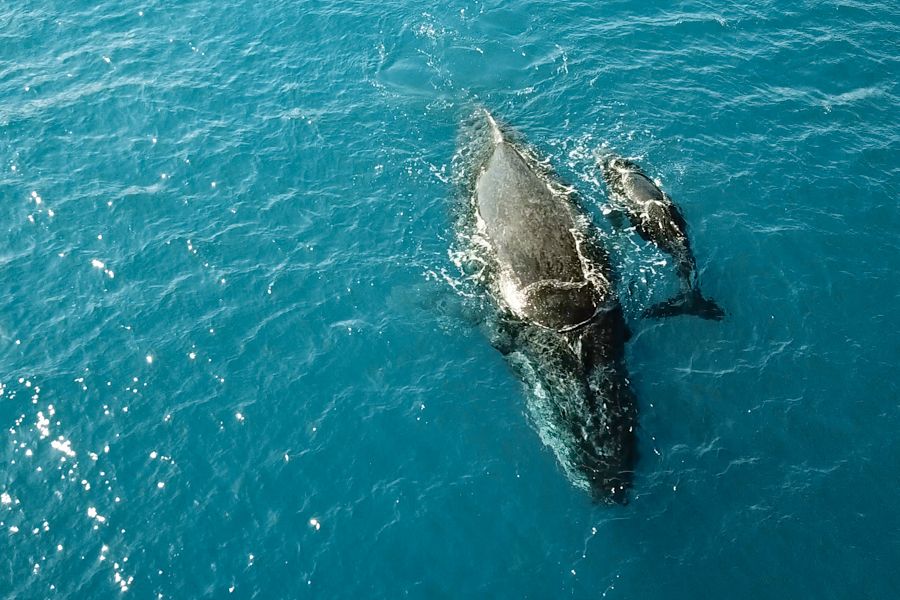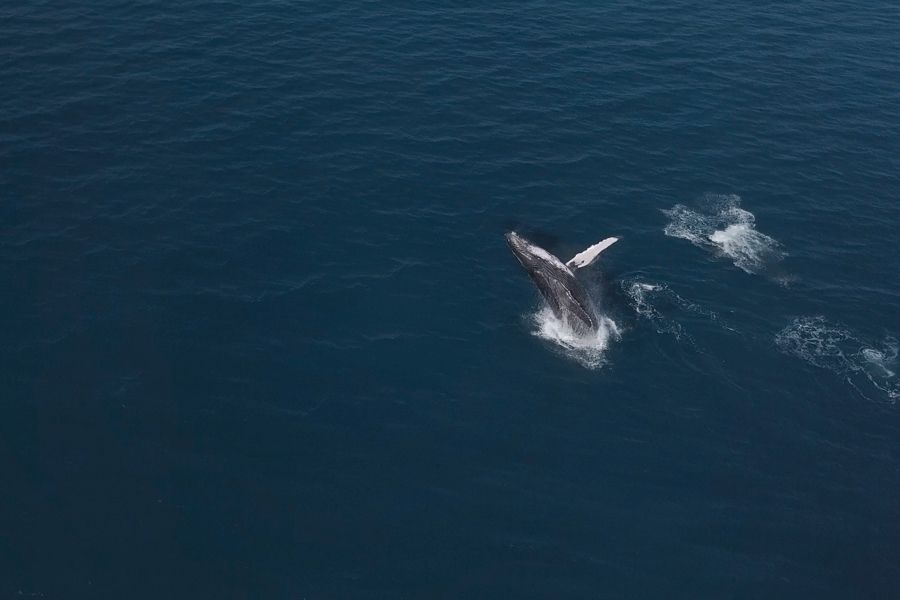Fun Facts About Humpback Whales
During whale season in the Whitsundays, Humpback Whales travel all the way from Antarctica to northern Australia so they can relax in the warm waters. In the winter months, travellers in the Whitsundays have the chance to spot whales frolicking in the turquoise Coral Sea while they are out on boat tours. Which whales are most commonly spotted in the Whitsundays? Humpback Whales!

Fun Facts About Humpback Whales
The magnificent humpback whale visits the Whitsunday Islands every year during the months of late July through to October on their annual pilgrimage to warmer waters. On this journey, large males or Bulls play together giving you the opportunity to see natural whale behaviour up close. Whether it be a cheeky glance or fin slap, or even an enormous breach in which the whale can soar up to 3 meters into the air, watching Humpback Whales is fascinating.
Here are some fun facts about Humpback Whales that you can keep in mind while whale watching in the Whitsundays.
These private charters are perfect for spotting whales in the Whitsundays!
Humpback Whales come to the Whitsundays to give birth and raise their young.
Part of the reason why whales migrate north in winter is so they can give birth and nurse their young in warm, calm waters. If you're lucky you can witness a whale birth first-hand and watch the mother teaching her offspring to swim and take its first breaths. Truly a once in a lifetime experience!
Watch these gentle giants of the oceans from the serenity of your vessel and learn more about their behaviour from our experienced and knowledgeable crew. Many people say that seeing whales in the wild is a lifelong dream and here in the Whitsundays is where that dream may become a reality!

The Whitsundays is now a Whale Heritage Site.
Because Humpback Whales love coming to the Whitsundays to raise their young, the Whitsundays have recently been named a Whale Heritage Site. The locals in the Whitsundays cherish the presence of whales in the winter, and there is much effort to protect these majestic creatures. That makes this the first Whale Heritage Site within the Great Barrier Reef World Heritage Area!
Humpbacks are among the easiest whales to identify.
With their black, bumpy skin and white underbelly, it's usually very easy to spot Humpback Whales in Australia. Their large heads generally have lots of barnacles, they have a small dorsal fin, and their pectoral fins are super long (around a third of their body length)! Humpbacks have baleen instead of teeth, and they are known for their playful energy.
Humpback tail patterns are unique.
In addition to their easily recognisable fins, baleen, and colouring, Humpback whales have unique tail patterns. Each whale has a different shape, size, and pattern on their tail. If you get to see a whale tail splashing outside of the water, look closely and and admire their unique look.

Humpback Whales never truly sleep.
Humpback whales don't sleep! They are conscious breathers and are therefore always partly awake. But they do have their own ways of resting. Scientists believe they can shut their brains down on one side so the other side can rest while one is conscious. Whales rest either vertically or horizontally in the water. When a female whale has a baby, she is awake all the time to keep the baby swimming, since the young whale cannot yet regulate buoyancy.
Humpback Whales have a sophisticated song.
Whale watching involves many senses. As well as seeing whales, you can hear the characteristic sounds of the beautiful whale song if you listen closely. Divers and scientists who listen to whales underwater can study this magnificent song and how it is used for communication and emotion. Males produce a complex whale song, which lasts for 10 to 20 minutes and is repeated for hours at a time. It's truly fascinating.
Humpback Whales have an impressive annual migration.
Humpback whales typically migrate up to 25,000 kilometres each year. Humpbacks feed only in summer, in the cold waters of Antarctica. Then they migrate to tropical or sub-tropical waters to breed and give birth in the winter. During the winter, humpbacks fast and live off their fat reserves. The species' diet consists mostly of krill and small fish. Humpbacks have a diverse repertoire of feeding methods.













